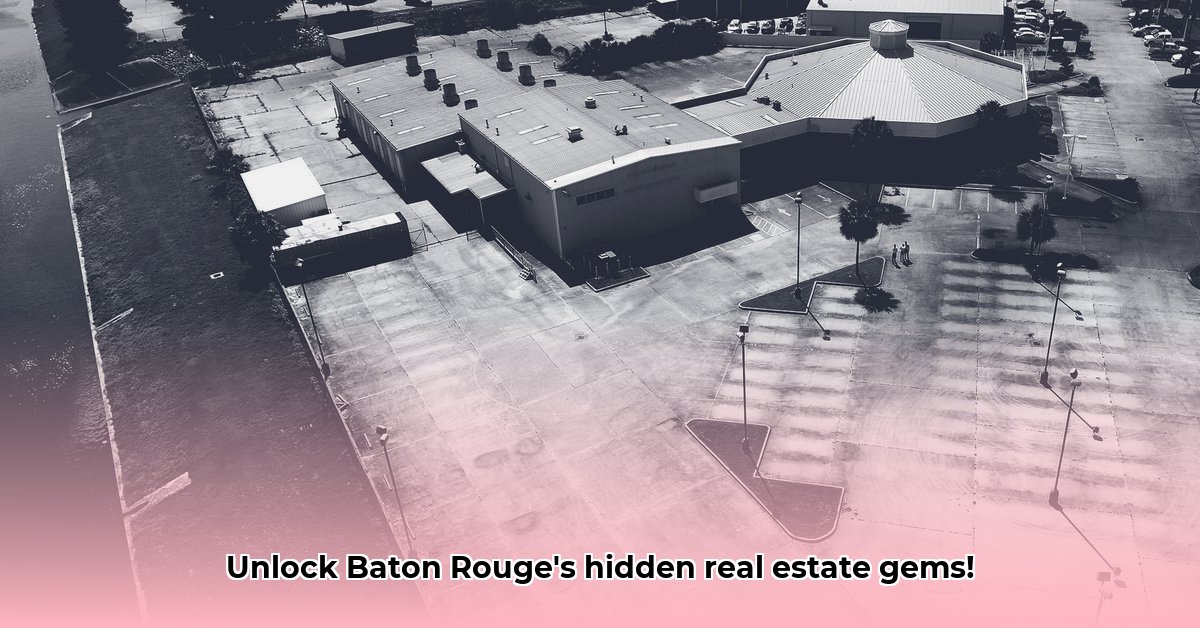
Beau Box Baton Rouge: Cracking the Code to Successful Investment
This guide unveils the exciting yet complex world of Baton Rouge commercial real estate, focusing on actionable investment strategies and navigating the local market landscape. We will explore the city's thriving business scene and help you understand the unique opportunities and challenges it presents. Let's uncover the secrets to success in Baton Rouge's vibrant commercial market – your gateway to the "Beau Box."
Decoding the Baton Rouge Real Estate Market: Opportunities and Challenges
Baton Rouge’s commercial real estate market presents a dynamic landscape. Its economy is diverse, driven by a strong state government presence, Louisiana State University (LSU), a burgeoning healthcare sector, and a strategic location for logistics and distribution. This translates to significant investment potential, but also requires careful consideration of inherent risks. Is Baton Rouge's economic diversity a shield against market downturns, or simply a characteristic of a volatile market? Further research is crucial to answering this question.
Growth Sectors: Where the Money's Likely Headed
Two sectors stand out for their significant growth potential in Baton Rouge: healthcare and logistics. The city's numerous medical facilities and its central location along major transportation routes fuel this expansion. This growth creates a wealth of opportunities for savvy investors. "The I-10 corridor, with its established infrastructure, offers significant potential for industrial and logistics investments," according to Baton Rouge investors. However, what are the long-term projections for growth in these sectors, adjusted for potential market fluctuations? This requires further investigation.
Navigating the Risks and Rewards: A Realistic Look
While healthcare and logistics present promising returns, understanding inherent risks is paramount. Fluctuations in energy prices, a significant factor in Louisiana's economy, can impact the overall market. Competition for prime properties is also intense. Thorough due diligence is therefore essential.
Here's a summary of short and long-term outlooks for various stakeholders:
| Stakeholder | Short-Term (0-1 Year) | Long-Term (3-5 Years) |
|---|---|---|
| Investors | Focus on healthcare & logistics; meticulous due diligence is key. | Diversify portfolio; explore emerging technologies and sustainable developments. |
| Developers | Analyze current demand; secure financing. | Adapt to market shifts; prioritize sustainable construction and environmentally conscious practices. |
| Businesses | Negotiate favorable lease terms; strategic location is paramount. | Plan for expansion; solidify long-term agreements with reliable partners. |
| Local Government | Attract investment via incentives and streamlined regulations. | Invest in infrastructure; promote urban renewal and sustainable development. |
Local Powerhouses: LSU, the State Government, and Their Impact
LSU and the state government significantly shape Baton Rouge's commercial real estate market. The university creates consistent demand for student housing, retail, and services. Government spending fuels construction and job creation. Understanding these factors is vital for accurate market analysis. How can investors effectively leverage these factors to maximize returns? Detailed analysis is necessary.
A Roadmap to Success: Actionable Steps for Smart Investment
Here's a practical step-by-step plan for navigating the Baton Rouge market:
- Deep Dive Market Research: Conduct thorough research, analyzing current trends and reliable future projections from reputable sources. Data-driven decisions are crucial.
- Risk Assessment & Mitigation: Identify and develop strategies to mitigate risks such as energy price volatility and competition. What percentage of your investment should be allocated to risk mitigation strategies? This depends on your risk tolerance.
- Strategic Networking: Build relationships with local developers, government officials, and business leaders to uncover hidden opportunities. How impactful is networking in accessing otherwise unavailable properties? Empirical data is needed.
- Secure Financing & Budgeting: Secure suitable financing and develop a detailed budget. What are the average interest rates for commercial real estate loans in Baton Rouge currently? This information is essential.
- Long-Term Perspective: Maintain flexibility to adapt your strategy as market conditions evolve. How frequently should your investment strategy be reviewed and adjusted? This requires careful consideration.
Analyzing Baton Rouge Commercial Real Estate Investment Risks: A Step-by-Step Guide
- Define Investment Goals: Clearly outline your financial objectives and risk tolerance. What is your desired ROI, and what level of risk are you willing to accept?
- Market Research: Analyze the market, focusing on relevant sectors and trends. What are the key indicators of market health in Baton Rouge? Analyzing vacancy rates, rental income projections, and growth potential is essential.
- Property Due Diligence: Conduct a thorough property inspection and obtain necessary permits. What are the common legal and regulatory hurdles in Baton Rouge commercial real estate transactions?
- Financial Analysis: Develop detailed financial models, including income and expense projections, and calculate key metrics (ROI, IRR, capitalization rate).
- Risk Assessment: Identify and evaluate potential risks, developing mitigation strategies. What are the most significant risks associated with investing in Baton Rouge commercial real estate? Understanding market downturns, vacancy rates, and unforeseen expenses is critical.
- Decision Making: Make an informed investment decision based on your assessment, projections, and investment goals.
Key Takeaways:
- Baton Rouge offers commercial real estate opportunities but demands careful risk assessment.
- Thorough due diligence, including financial modeling and realistic valuations, is paramount.
- Understanding local market nuances, including the influence of LSU and the state government, is crucial.
- Diversification, conservative leverage, and proactive risk mitigation are vital for long-term success.
- Networking and leveraging market intelligence are key to navigating the competitive landscape.